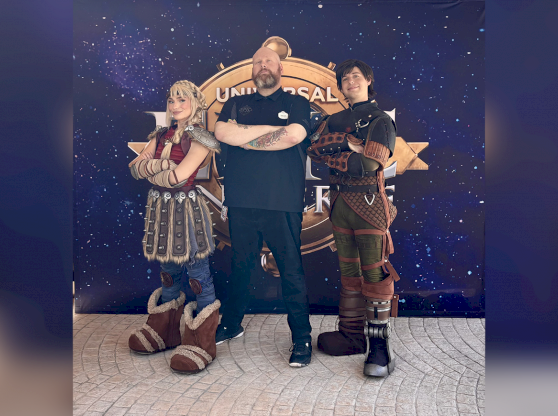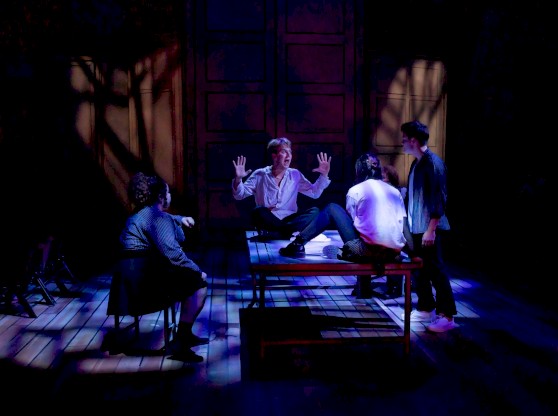Julie Ballard (MFA ‘04) will design two pieces for the world renowned dance company, Hubbard Street Dance Chicago, this May.
Ballard is the current Stage Manager/Head of Props for the Hubbard Street Dance company, which was once divided into two companies, Hubbard Street Dance Chicago and Hubbard Street 2. Hubbard Street 2 has since dissolved. She said it was always her goal to design for Hubbard Street Dance Chicago. Ballard said that she was offered the opportunity to design for the company after working with Hubbard Street 2 for a couple of years.
“I started working with the second company [Hubbard Street 2] in 2013 and transitioned in 2014 to the production manager for the main company,” she said. “In 2015 I became the head of props and stage manager. While working with the second company I was the stage manager/lighting supervisor, and designed six pieces for the second company including an evening length children's show that premiered at the Kennedy Center. The piece, Mariko’s Magical Mix, was choreographed by Robyn Mineko Williams with puppetry by Manual Cinema. Designing for the main company has always been an aspiration of mine, and I’m grateful the work I did with the second company has lead to this opportunity.”
Her lighting designs will reflect the stark, contemporary feelings that are incorporated in Alice Klock’s Clan(device).
“Alice Klock’s Clan(device) was originally created for Hubbard Street 2, and I designed it for a performance in North Carolina last season,” she said. “Hubbard Street 2 has since dissolved, however Alice’s piece was adopted by the main company for the upcoming subscriber series highlighting female choreographers. Since we premiered the piece, it has evolved tremendously, but the general feel is still there. It is loosely based on Alice’s relationships with her family members but has a stark, and contemporary feel. I plan to use cool colors and isolation to highlight some of the great partnering in the piece and the fantastic original sound score.”
She said that she liked to take notes and make sure that she is on the same page as the choreographer because it is their vision that will be featured on the stage.
“I try to go to a rehearsal or at least get a video of the piece and I make notes about moments that stand out, or about how the piece makes me feel,” she said. “Then I walk away, and go back to reference a video. I like to see if my second impressions match my first impressions before I make any decisions about how to design the piece. I then type up a few potential cues to build from for when I speak to the choreographer about my ideas. The cue descriptions I submit are a starting point from my end, but I like to make sure that I’m on the same page as the choreographer. Because it is their vision for the piece is what will happen on stage.”
She said the most difficult part of designing is the time aspect.
“A choreographer has, in most cases, months to put a piece together, while I will have about an hour and a half to work in the theater designing and teaching a piece,” she said. “That is why the conversations ahead of time are so critical.”
She also advised those looking to go into her field to have patience.
“It’s taken me 20 years to meet some of my bigger goals,” she said. “It takes a lot of patience to get to this point, but is extremely rewarding. In dance, it is really important that designers be versatile and be willing to do jobs outside of their areas of expertise. Because I’m willing and able to work in multiple areas of technical theater and design, I’ve managed to work consistently in the industry for more than 20 years.”



